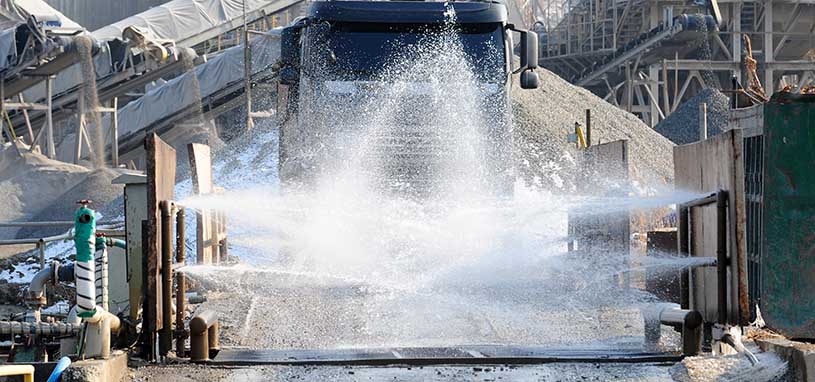Reducing water consumption in one of the world's driest climates
Australia has one of the driest climates in the world and saving water is an important part of doing business in Australia. The cost of discharging trade waste water to the sewer system is actually more expensive than buying fresh water from the mains in Australia.
This means that industrial and commercial users of water pay for their water twice - once when they buy it and the second time when they discharge the waste. Reducing industrial waste water can therefore go a long way towards reducing operating costs and demonstrating environmental responsibility.
Options are available to minimise water costs from both sides. Rainwater harvesting reduces the amount of water you need to buy. On the other hand, waste water recycling reduces both the discharge water volume and the amount of water you need to buy.
Understand how you can reduce water consumption in your business. Watch our video about the benefits of a rainwater harvesting plan, stormwater harvesting and reuse projects, and stormwater harvesting systems design.
Cleanawater offers technical expertise and equipment to help you implement rainwater harvesting and waste water recycling. Find out more about reducing industrial water consumption here.
What is rainwater harvesting?

A rainwater harvesting system captures the rain water falling on a roofed building or hardstand area and treats it for use. These systems are scalable between 1,000 litres and 1,000,000 litres depending on the collection area. Harvested rainwater is stored in tanks and used on demand through pumps and automation systems.
Treatment systems remove impurities. This can involve simple or multistage filtration. In addition, oil water separation ensures that oils and greases washed off of hardstand areas is removed from the water before it is used. Rainwater must also be sterilised before use. UV, ozone and chlorine options are available for this purpose.
What is trade waste water recycling?
A trade waste water recycling system captures waste water from an industrial or commercial application, cleans it and re-uses it in the process. Treatment systems depend on the expected contaminants but can include multi-stage filtration.
While 100% of captured water can be re-used, some water losses occur. Cleaning of equipment through backwashing as well as evaporation cause these losses, making the actual water recycle ratio about 80%.
Recycle systems can be supplied as closed loop systems with zero discharge. Otherwise, a small stream of treated waste ater may also be discharged to the sewer network or held in storage for disposal.
Where does rainwater harvesting, and waste water recycling apply?
One industry where these water saving practices are widely used is in the car wash and wash down bay environment. Any company cleaning cars, trucks, equipment or industrial crates is using large volumes of water for this task. Quarantine (AQIS) wash down is especially suited for waste water recycling because of regulations associated with this operation.
However, a number of other operations can also benefit from the reduction in water use that rainwater harvesting and waste water recycling offer. Examples are dust suppression on construction or mining sites, industrial processes that consume water in normal operation, or large-scale irrigation schemes.
Australia has a very dry climate and water is a scarce resource. It makes both economic and environmental sense to conserve water and re-use as much as possible. Being a “green business” is also important for the public image of a company. Many ordinary Australians would choose a water conscious car wash if it was available to them and they were aware of its environmental stance.
Remote monitoring

One of the perceived challenges with rainwater harvesting and waste water recycling is the effective monitoring and control over water quality and equipment performance. These systems are often business critical, and the availability of water must be maintained at all times. Car wash or equipment wash down operators are not necessarily water experts and may not be equipped to identify quality or performance issues.
Cleanawater provides a remote monitoring service. Water treatment engineers keep watch on important parameters from our offices in real time. They can initiate maintenance or operating responses based on this information as well as respond to alarm conditions.
Other tips for reducing waste water
All methods for reducing water consumption and trade waste water production can be helpful to water users. Some additional practical tips are as follows:
- Use low flow nozzles to reduce the actual water used during washing.
- Make sure the washdown area is contained so that water is not lost to the stormwater system. This is also a compliance issue.
- Prevent overspray by adjusting water pressure and the location of spray points.
- Keep gutter systems in good condition and free of blockages. This prevents rainwater being lost by overflow.
- Monitor water usage and investigate sudden increases, which may be due to leaks.
Contact Cleanawater
Cleanawater is an expert water treatment company with more than 20 years experience in Australia. Our technical experts can help you evaluate your operation and advise on the best solution to minimise water use and waste water production.
Contact Cleanawater here or call our expert team on 1800 353 788 today to arrange a consultation for your rainwater harvesting and trade waste water recycling needs.
Must Read
What to Expect During a Modular Wash Bay Installation
CleanaWater, we make the process of installing a modular wash bay on your site as smooth and straightforward as possible. ...
Read moreThe CleanaWater Team Driving Water Treatment and Sustainability
CleanaWater is powered by a dedicated team of professionals who bring expertise and passion to every project. ...
Read more